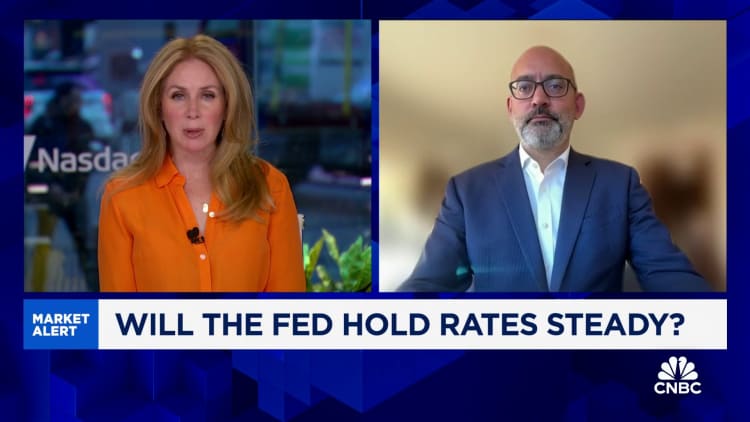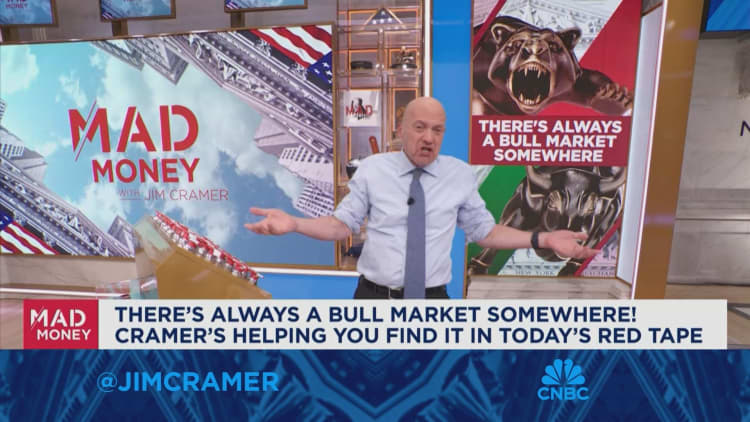[ad_1]
A consumer purchase food at a supermarket on March 12, 2024 in San Rafael, The Golden State.
Justin Sullivan|Getty Images Information|Getty Images
The last set of rising cost of living information that Federal Get authorities will certainly see prior to their plan conference following week remains in, and none of it is excellent.
In the accumulation, Business Division indexes that the Fed relies upon for rising cost of living signals revealed rates remaining to climb up at a price still substantially in advance of the reserve bank’s 2% yearly objective, according to different records today.
Within that image came numerous prominent factors: A wealth of cash still sloshing with the monetary system is providing customers lasting getting power. Actually, customers are investing greater than they’re absorbing, a scenario neither lasting neither disinflationary. Ultimately, customers are dipping right into financial savings to money those acquisitions, producing a perilous circumstance, otherwise currently after that later on.
Placed all of it with each other, and it amounts to a Fed most likely to be careful and not in the state of mind anytime quickly to begin reducing rates of interest.

” Simply investing a great deal of cash is producing need, it’s producing stimulation. With joblessness under 4%, it should not be that unexpected that rates aren’t” decreasing, claimed Joseph LaVorgna, primary financial expert at SMBC Nikko Stocks. “Investing numbers aren’t decreasing anytime quickly. So you may have a sticky rising cost of living circumstance.”
Indeed, information the Bureau of Economic Analysis released Friday revealed that investing exceeded revenue in March, as it has in 3 of the previous 4 months, while the individual financial savings price dove to 3.2%, its cheapest degree given that October 2022.
At the very same time, the individual usage expenses consumer price index, the Fed’s essential procedure in identifying rising cost of living stress, went up to 2.7% in March when consisting of all products, and held at 2.8% for the crucial core procedure that secures extra unstable food and power rates.
A day previously, the division reported that annualized rising cost of living in the initial quarter performed at a 3.7% core price in the initial quarter in overall, and 3.4% on the heading basis. That came as genuine gdp development slowed down to a 1.6% rate, well listed below the agreement price quote.
Threat scenarios
The persistent rising cost of living information increased numerous threatening specters, specifically that the Fed may have to keep rates elevated for longer than it or financial markets would like, threatening the hoped-for soft economic landing.
There’s an even more chilling threat that should inflation really persist, central bankers may have to not only consider holding rates where they are but also contemplate future hikes.
“For now, it means the Fed’s not going to be cutting, and if [inflation] doesn’t come down, the Fed’s either going to have to hike at some point or keep rates higher for longer,” said LaVorgna, who was chief economist for the National Economic Council under former President Donald Trump. “Does that ultimately give us the hard landing?”
The inflation problem in the U.S. today first emerged in 2022, and had multiple sources.
At the beginning of the flare-up, the issues came largely from supply chain disruptions that Fed officials thought would go away once shippers and manufacturers had the chance to catch up as pandemic restrictions eased.
But even with the Covid economic crisis well in the rear view mirror, Congress and the Biden administration continue to spend lavishly, with the budget deficit at 6.2% of GDP as of the end of 2023. That’s the highest outside of the Covid years since 2012 and a level generally associated with economic downturns, not expansions.
On top of that, a still-bustling labor market, in which job openings outnumbered available workers at one point by a 2 to 1 margin and are still at about 1.4 to 1, also helped keep wage pressures high.
Now, even with demand shifting back from goods to services, the normal state of the U.S. economy, inflation remains elevated and is confounding the Fed’s efforts to slow demand.

Fed officials had thought inflation would ease this year as housing costs subsided. While most economists still expect an influx of supply to pull down shelter-related prices, other areas have cropped up.
For instance, core PCE services inflation excluding housing â a relatively new wrinkle in the inflation equation nicknamed “supercore” â is running at a 5.6% annualized rate over the past three months, according to Mike Sanders, head of fixed income at Madison Investments.
Demand, which the Fed’s rate hikes were supposed to quell, has remained robust, helping drive inflation and signaling that the central bank may not have as much power as it thinks to bring down the pace of price increases.
“If inflation remains higher, the Fed will be faced with the difficult choice of pushing the economy into a recession, abandoning its soft landing scenario, or tolerating inflation higher than 2%,” Sanders said. “To us, accepting higher inflation is the more prudent option.”
Worries about a hard landing
Thus far, the economy has managed to avoid broader damage from the inflation problem, though there are some notable cracks.
Credit delinquencies have hit their highest level in a decade, and there’s a growing unease on Wall Street that there’s more volatility to come.
Inflation expectations also are on the rise, with the closely watched University of Michigan consumer sentiment survey revealing one- and five-year rising cost of living assumptions specifically at yearly prices of 3.2% and 3%, their highest possible given that November 2023.
No much less a resource than JPMorgan Chase Chief Executive Officer Jamie Dimon today dithered from calling the united state financial boom “astounding” on Wednesday to a day letter informing the Wall surface Road Journal that he’s fretted all the federal government investing is producing rising cost of living that is extra unbending than what is presently valued.
” That’s driving a great deal of this development, which will certainly have various other effects potentially later on called rising cost of living, which might not disappear like individuals anticipate,” Dimon claimed. “So I take a look at the variety of feasible results. You can have that soft touchdown. I’m a little bit extra anxious that it might not be so soft and rising cost of living might not go fairly the means individuals anticipate.”
Dimon approximated that markets are valuing in the chances of a soft touchdown at 70%.
” I believe it’s fifty percent that,” he claimed.
[ad_2]
Source link .




